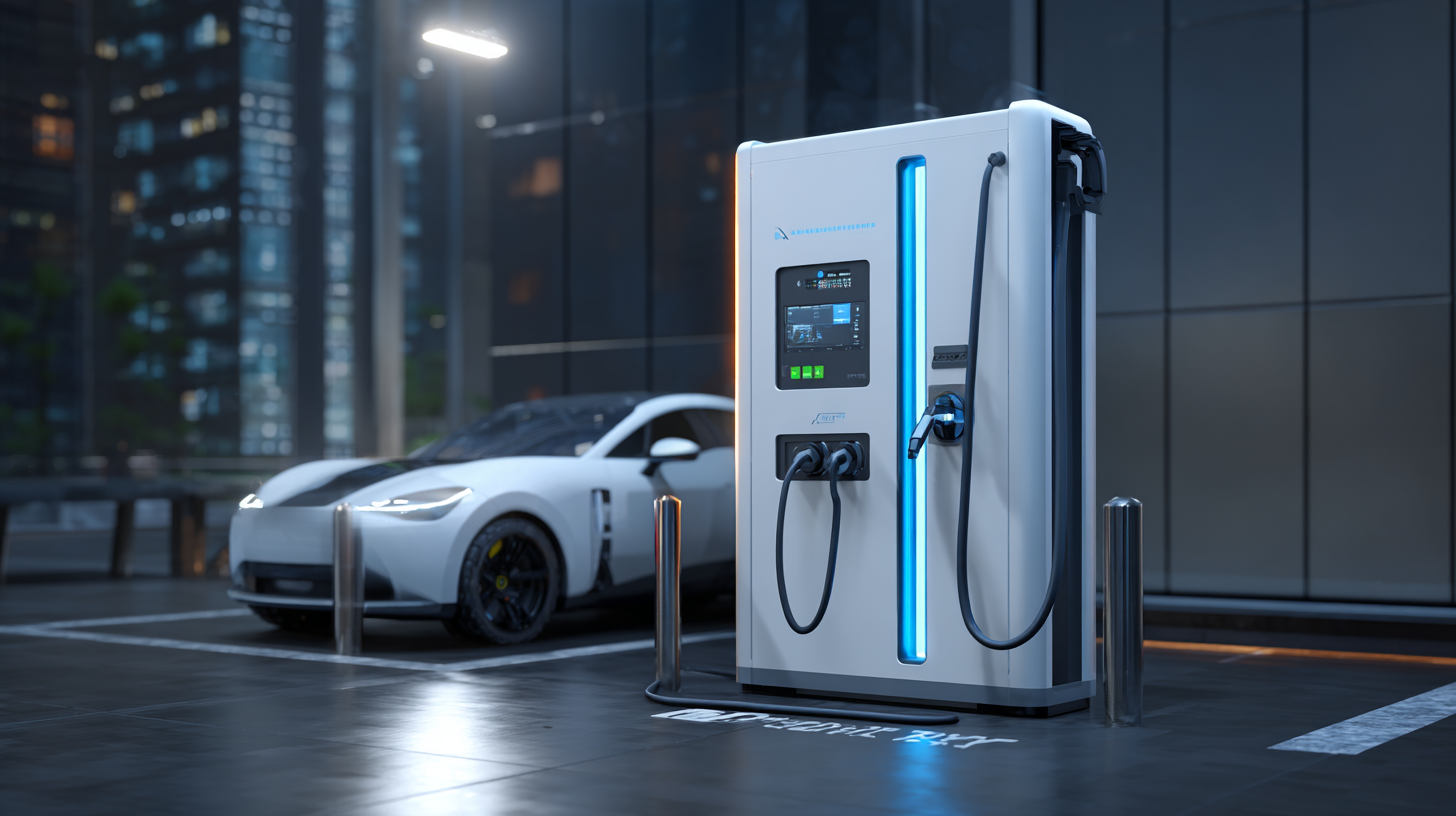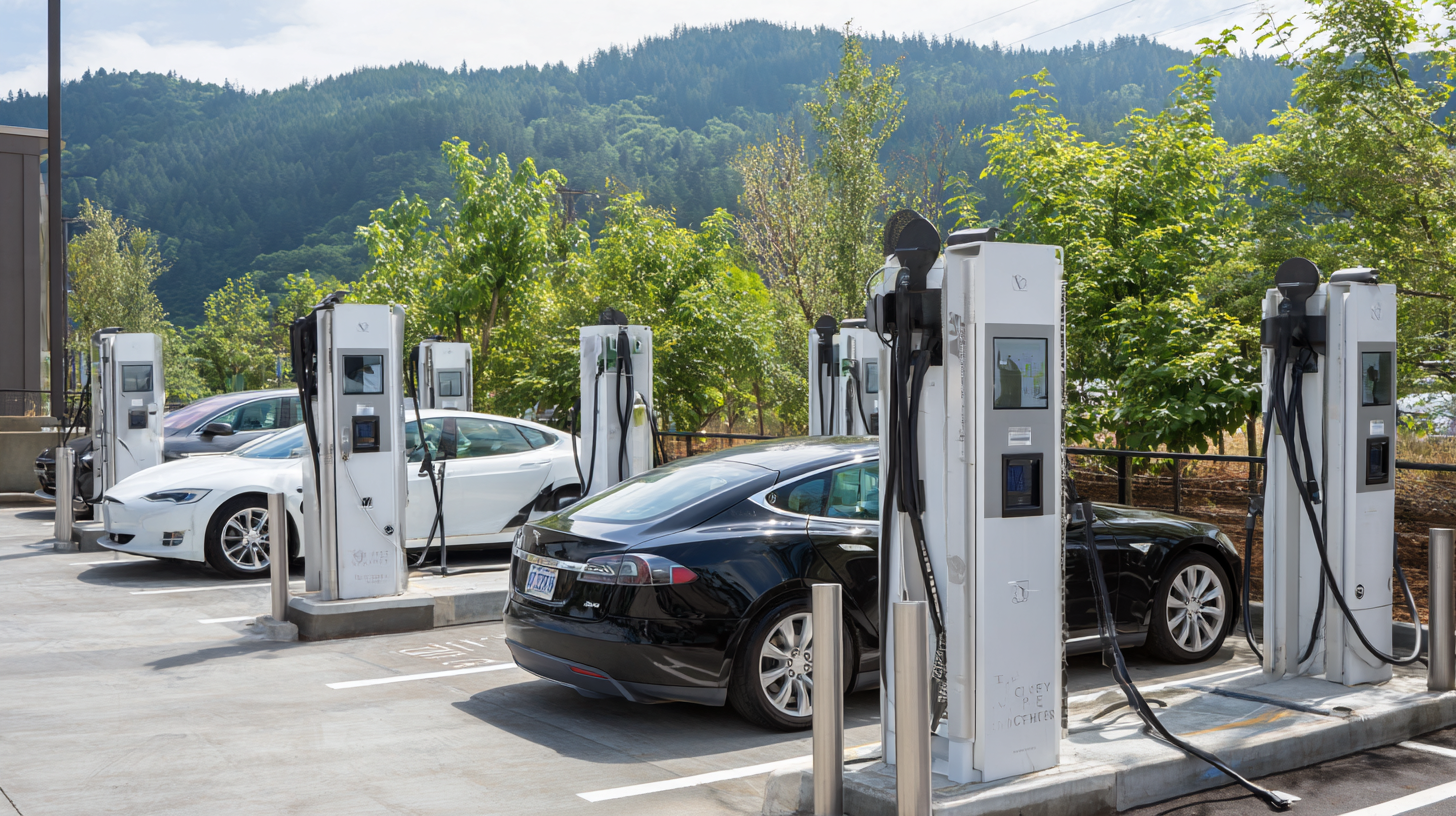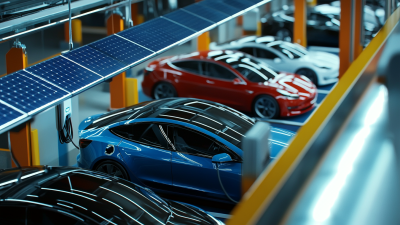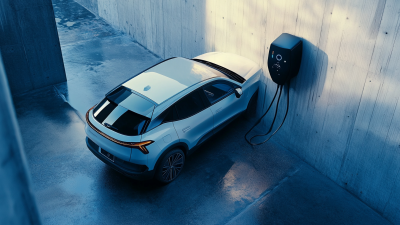As the electric vehicle (EV) market continues to grow, propelled by both consumer demand and stringent environmental regulations, the need for efficient charging infrastructure is more critical than ever. According to a recent report by the International Energy Agency, the global EV market is projected to reach over 145 million vehicles by 2030, which translates to a substantial increase in the demand for widespread, accessible charging solutions.

DC Fast Charger stations play a pivotal role in this transformation, enabling EV users to recharge their vehicles in a matter of minutes rather than hours. These stations, capable of delivering high power levels, have seen a remarkable rise in installations, with estimates indicating a jump from approximately 30,000 to over 150,000 worldwide by the end of this decade.
As we explore the future of EV travel, understanding the impact and functionality of DC Fast Charger stations will be essential for making the transition to electric mobility smoother and more efficient for all drivers.
The rapid advancement of technology in electric vehicle (EV) infrastructure is embodied in the rise of DC fast chargers. These powerful charging stations are revolutionizing the way we approach EV travel, significantly reducing downtime and enhancing convenience for drivers. Unlike traditional chargers, which take hours to replenish a battery, DC fast chargers can deliver a substantial charge in just 30 minutes, allowing users to recharge while taking a break during long journeys.
As more DC fast chargers are installed along highways and urban centers, they facilitate seamless travel for EV users. This widespread availability alleviates range anxiety, encouraging more individuals to make the switch to electric. Furthermore, the integration of fast charging stations with existing navigation systems allows drivers to plan their routes more effectively, ensuring access to charging facilities. The emergence of this robust charging network not only supports the growing EV market but also aligns with global sustainability goals, making electric travel an increasingly viable choice for all drivers.
The rise of DC fast charging stations is revolutionizing the way we think about electric vehicle (EV) travel. These state-of-the-art chargers significantly reduce charging times, allowing drivers to replenish their batteries in a matter of minutes rather than hours. This convenience transforms road trips, as EV owners can plan their journeys with the confidence that they can quickly recharge at strategically located stations, making long-distance travel more practical and enjoyable.
Moreover, the proliferation of fast charging stations enhances accessibility for EV users, particularly in regions that may have previously lacked adequate infrastructure. This network expansion not only alleviates range anxiety but also promotes the adoption of electric vehicles by making them a more viable option for everyday consumers. As more fast charging stations become available alongside major highways and urban centers, they pave the way for a future where electric vehicles are not only an environmentally friendly alternative but also a highly convenient choice for transportation.
The rapid advancement of technology in the electric vehicle (EV) sector is exemplified by the development of DC fast charger stations, which are revolutionizing the EV travel experience. According to a recent report by McKinsey, the global market for EV charging infrastructure is projected to reach $140 billion by 2030, driven largely by innovations in fast charging technology. These DC fast chargers can deliver up to 350 kW of power, allowing EVs to recharge to 80% in as little as 15-30 minutes, drastically reducing downtime for drivers compared to traditional chargers.

Moreover, the integration of smart technology into fast charging stations is enhancing user convenience and efficiency. Features such as real-time availability tracking and mobile app interfaces are becoming standard. A report from BloombergNEF highlights that over 40% of new charging stations will likely be equipped with smart technology by 2025, which will facilitate dynamic pricing and optimize energy use based on demand. This technological evolution not only supports the growing number of electric vehicles on the road but also addresses the increasing consumer demand for convenient and accessible charging solutions, paving the way for a sustainable future in transportation.
The rise of DC fast charger stations is revolutionizing the landscape of electric vehicle (EV) travel, with significant economic benefits emerging for local businesses. As these charging stations become more widespread, they provide a critical service to EV drivers, allowing them to recharge quickly and conveniently while visiting nearby shops and restaurants. This accessibility attracts a new clientele, as travelers and commuters often look for charging options during their stopovers, preferring to support local establishments.

Moreover, the presence of fast charger stations can enhance the visibility and vibrancy of communities. As electric vehicles become increasingly popular, local businesses can capitalize on the influx of customers who need to charge their vehicles. This not only boosts sales for these businesses but also fosters a sense of community as they become part of the growing EV ecosystem. Consequently, investing in charging infrastructure not only supports sustainability goals but also drives economic growth by creating jobs, increasing foot traffic, and encouraging local spending.
The rise of DC fast charging stations is transforming electric vehicle (EV) travel by promoting sustainability and enhancing the overall user experience. As EV adoption surges, with projections indicating that the North American DC Charger market will grow from $1,040.6 million in 2025 to $26,152.5 million by 2040, it is evident that robust charging infrastructure is critical for the future of sustainable mobility. This growth manifests a compound annual growth rate (CAGR) of 24.0%, underscoring the urgent need for widespread DC fast charging facilities to meet the demands of an expanding EV market.
One of the key environmental benefits of increased DC fast charging availability is the significant reduction in greenhouse gas emissions associated with traditional fuel sources. Transitioning to electric vehicles not only decreases air pollutants but also optimizes energy use in urban settings. By investing in reliable charging networks, cities can foster sustainable environments, drawing from empirical studies that emphasize user patterns and infrastructure requirements.
Tips for travelers: When planning long-distance trips with an electric vehicle, it's essential to map out charging stations along your route. Prioritize stops with DC fast chargers for quicker charging times, allowing you to optimize your journey efficiently. Additionally, consider using mobile apps that provide real-time data on charger availability to avoid any inconvenience during your travels.
| Dimension | Value |
|---|---|
| Total DC Fast Chargers Worldwide | 80,000+ |
| Average Charging Time (0-80%) | 30 minutes |
| Environmental Impact Reduction (CO2 emissions) | 2.5 million tons annually |
| Projected Growth Rate (2023-2030) | 25% CAGR |
| Percentage of Fast Chargers at Urban Locations | 60% |
| User Satisfaction Rate | 85% |
| Cost Savings per Charge (vs. Gasoline) | Approximately $5 |






